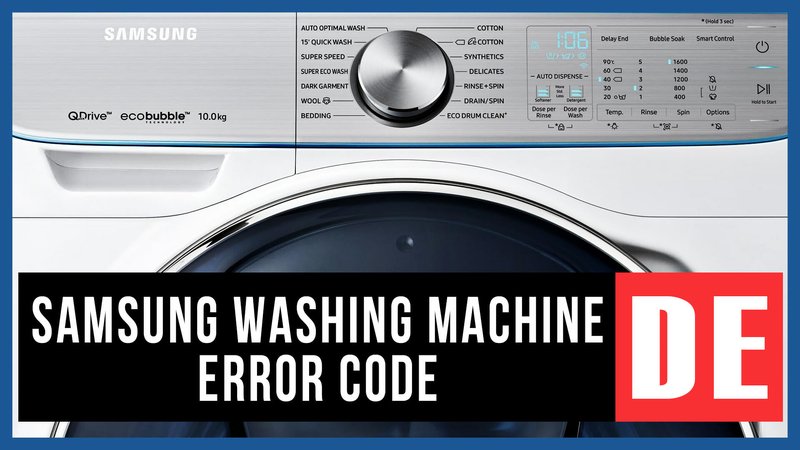
You might be wondering, why does this even happen? Well, just like how a garden hose can get a kink or become blocked after long use, the parts inside your washing machine can face similar issues over time. The F1 error is your machine’s gentle nudge saying, “Hey, I need a check-up!” So, before you consider buying a new appliance or calling in a professional, understanding these common causes can help you decide the best course of action.
Understanding the F1 Error Code
The F1 error code in a Samsung washing machine generally signals a problem with the water supply to the machine. This is a bit like if you were trying to fill up a bucket with water, but the tap was only dripping. The machine can’t get the water it needs to run a successful wash cycle. There are a few main components and reasons behind this:
Firstly, the water inlet valve might be malfunctioning. Imagine this part as the gatekeeper of water into your machine. If it’s jammed or broken, water can’t flow through like it should. This happens when the valve is clogged with sediment or simply worn out from use. Regular maintenance, like checking and cleaning the valve, can help prevent build-up that might cause problems.
Secondly, the pressure switch or the water level sensor could be faulty. This component acts like a gauge that tells the washing machine how much water is inside. If it’s not working properly, it might falsely report that there’s enough water or none at all, triggering the F1 error. Think of it as a leaky compass trying to give you directions; it’s not going to lead you to the right destination efficiently.
Lastly, there might be an issue with the control board. This is the brain of your washing machine, coordinating all its functions. A glitch here, possibly due to electrical surges or wear and tear, might cause incorrect signals to be sent, like displaying an F1 error without an actual water issue. In such cases, resetting the machine, just like rebooting a computer, can sometimes resolve the problem.
Exploring Common Causes
One of the most frequent culprits behind the F1 error is sediment build-up in the water inlet valve. Picture this: over time, tiny particles in your water supply can settle in the valve, much like sand collecting at the bottom of a pond. This accumulation can prevent the valve from opening fully, restricting water flow and triggering error codes. Regularly inspecting and cleaning the valve can help keep this issue at bay.
Another common issue is a kink or blockage in the water supply hose. Consider how a garden hose can become bent or tangled, stopping water from flowing through at the right pressure. If your washing machine’s supply hose is similarly compromised, it might not be able to supply the machine with enough water, leading to an F1 error. Ensuring the hose is straight and free from obstructions can often solve this issue quickly and easily.
Electrical issues with the water level sensor or pressure switch can also lead to an F1 error. These sensors are like a thermostat in your home, constantly checking and telling the system what to do next. If they’re not receiving or sending the correct signals due to a loose connection or damage, it’s like having a thermostat with a dead battery—it simply won’t work right. Regularly checking connections and ensuring they are secure can prevent such errors.
What You Can Do Next
Alright, so now that we’ve demystified some of the common causes of the F1 error, you might be wondering what to do next. If you’re feeling adventurous, you can start by giving your washing machine a little TLC. Check the water inlet valve for any sediment build-up, and clean it if necessary. Make sure the water supply hose isn’t kinked or blocked, and if you’re comfortable, inspect the connections on the pressure switch or sensor.
If all else fails, resetting your Samsung washing machine can often clear temporary glitches. This involves turning off the machine, unplugging it for a few minutes, and then plugging it back in to see if the error persists. However, if the F1 error still stubbornly displays, it may be time to call in a professional technician to take a closer look and perform more in-depth repairs.
In the meantime, regular maintenance and inspection can go a long way in preventing these hiccups. Just like keeping up with oil changes for your car, ensuring your washing machine is clean and in good working order can minimize future issues and prolong its lifespan. So, keep an eye on those components and hopefully, you’ll have many smooth laundry days ahead without the interruptions of pesky error codes.
